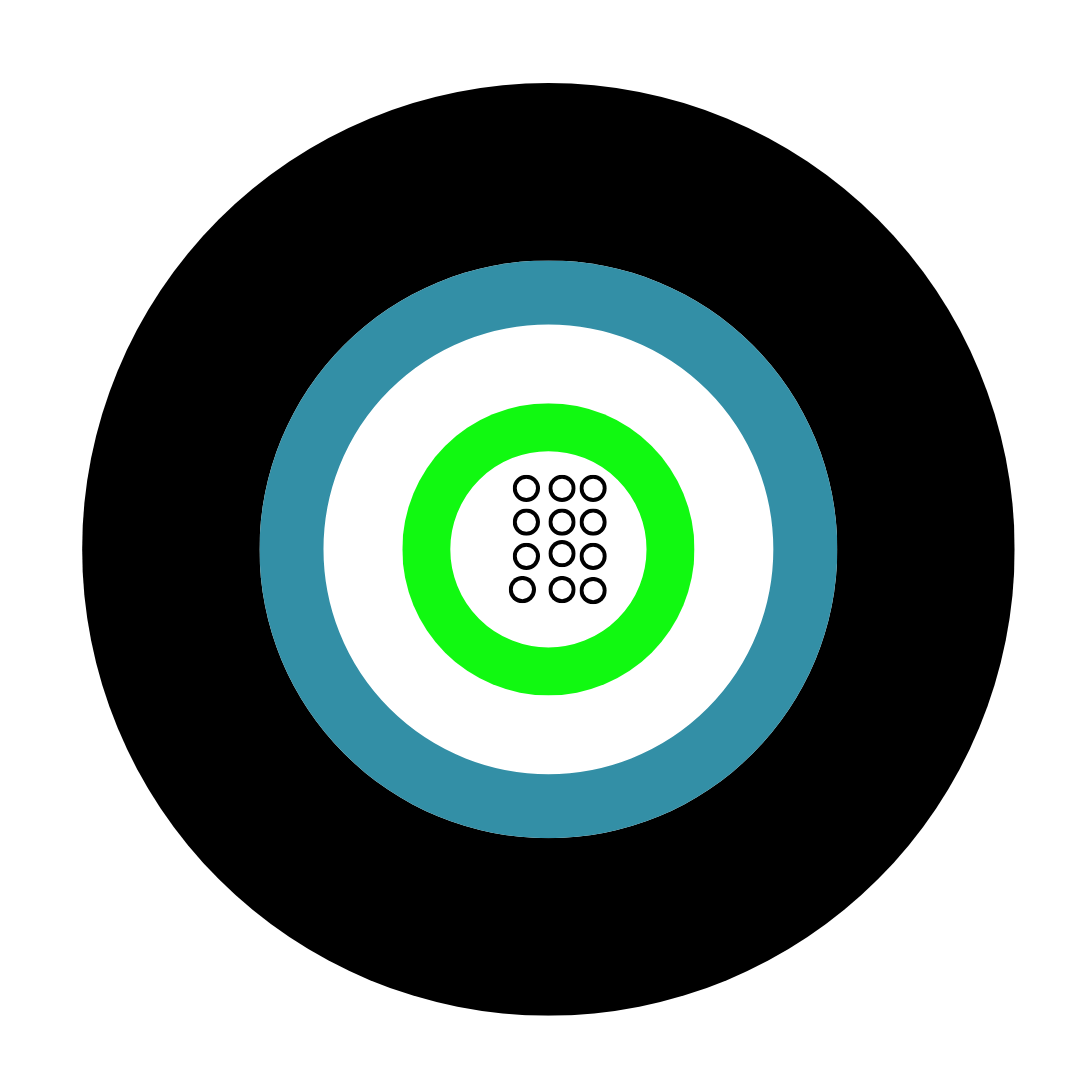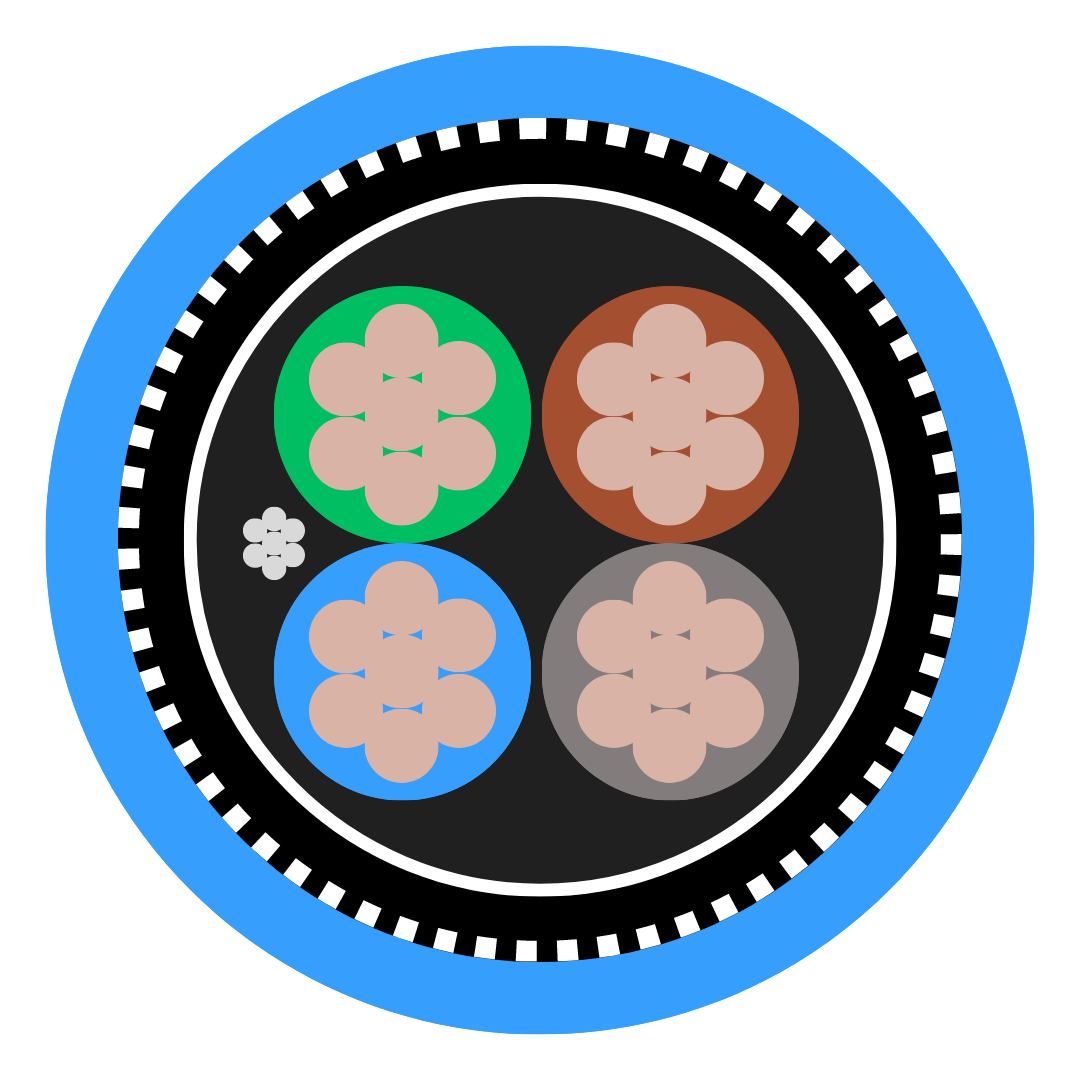Choosing the right size of SWA cable gland is crucial for a safe and reliable electrical installation. The correct gland size depends on the cable's core count, cable diameter, and whether the installation is indoors or outdoors. Using the right gland ensures a secure seal and protects the cable from damage, moisture, and environmental effects.
SWA cable glands come with different prefixes, such as BW for dry indoor use and CW for wet or outdoor environments. Knowing the exact measurements of the armoured cable and its cores helps in selecting the correct gland size from a detailed size chart designed for a wide range of cable configurations. This prevents issues like poor fitting or sealing, which could compromise the system’s safety and performance.
Understanding how to read and apply an SWA cable glands size chart saves time and cost by avoiding wrong purchases. It also supports making informed decisions when adding fittings or accessories that match the cable size and installation conditions. This knowledge is essential for both professionals and those new to handling armoured cables.
Key Takeaways
Accurate cable measurements are essential before choosing a gland.
Different gland types suit indoor and outdoor environments.
Using a size chart helps avoid fitting errors and ensures system safety.
Before You Order
Choosing the correct steel wire armoured (SWA) cable gland requires careful attention to specific cable details and environmental factors. Precise measurements, understanding the cable’s core and conductor size, and knowing where the cable will be installed are essential for a safe and effective installation.
Measure The Cable Outside Diameter (OD)
The outside diameter (OD) of the cable is the most critical measurement when selecting an SWA cable gland. This includes the outer sheath and the armour layer.
Using a caliper or measuring tape, measure the cable’s OD accurately. The gland size must match this dimension to ensure a tight seal and secure mechanical grip. If the gland is too large, it won’t hold the cable securely. If too small, it may damage the cable during installation.
It’s important to measure at several points along the cable to account for any irregularities. Choose the largest reading to avoid fitting issues. This prevents water ingress and maintains the integrity of the armoured layer.
Note Cores And Conductor Size (E.g. 3C 2.5 Mm²)
The number of cores and the conductor size affects the choice of gland size. SWA cables can have varying core counts, from single to multicore designs, and this impacts gland sizing.
For example, a 3-core cable with 2.5 mm² conductor size is labelled as 3C 2.5 mm². Cable glands are sized to fit both the cores and the overall diameter. The gland must accommodate the cable’s cross-sectional area and core count to fit correctly.
Higher core counts need larger glands to fit all conductors and provide proper strain relief. The size chart usually pairs cores with cable sizes to recommend the right gland for both mechanical and electrical protection.
Check Location And Rating (Indoor/Outdoor, IP, Corrosion)
The installation location greatly influences the type of SWA gland needed. Indoor and outdoor environments have different requirements, especially concerning sealing and corrosion resistance.
For indoor dry locations, glands with a BW prefix are suitable. For outdoor or damp environments, CW glands are designed to provide better water resistance and higher IP (Ingress Protection) ratings.
Consider corrosion risk if the cable is exposed to harsh conditions. Glands made from corrosion-resistant materials like nickel-plated brass or stainless steel prolong service life. Confirm the IP rating matches the exposure level, as this affects safety and durability in armoured cable installations.
Pick The Right Type
Choosing the correct SWA cable gland depends on the environment and the cable’s demands. Some glands are made specifically for dry conditions, while others offer protection for wet or outdoor settings. Material also matters, as it influences durability and safety.
BW - For Dry Indoor Use
BW glands are designed for dry, indoor areas. They secure the cable armour but do not seal the outer sheath. This means moisture or water can get through if used outside. BW glands are best for places like electrical cupboards or dry factory floors.
They usually provide lower IP ratings, around IP30 to IP54, so they are not weatherproof. The “BW” stands for Brass Wired, but modern BW glands are not weather-resistant. Using them outdoors risks corrosion and damage.
BW glands are cost-effective for indoor use where exposure to weather or moisture is not a concern. However, they should never be used outside or in damp places.
CW - For Outdoor Or Wet Areas
CW glands are made for outdoor and wet environments. They include seals that grip the cable’s outer sheath, stopping water, dust, and dirt from entering. This gives a higher protection level, usually IP66 or more, making them weatherproof.
These glands have a compression ring that tightens around the sheath. This keeps the cable secure and sealed against moisture. They are suitable for outdoor wiring, damp basements, and industrial sites.
Using CW glands in wet or exposed areas prevents cable damage and safety failures. They work well in conditions where vibrations or mechanical stress might occur.
Single-Core/AWA Options; Materials (Brass, Nickel-Plated, Stainless)
Single-core or AWA glands are designed for cables without armour or with aluminium wire armour. Their design varies to fit these cables securely.
Material choice affects strength and corrosion resistance. Brass is common for durability and conductivity. Some glands are nickel-plated, offering extra corrosion protection, useful in harsh environments. Stainless steel glands provide the best resistance against rust and chemicals, ideal for marine or chemical applications.
Selecting the right material improves longevity and safety. The environment and cable type determine the best gland material for each installation.
Use The Size Chart
Choosing the right SWA cable gland size is key to a secure and effective installation. Knowing how to pick the correct gland begins with understanding the gland’s metric thread and matching the gland’s outer diameter to the cable’s overall diameter (OD). Accurate sizing ensures a tight fit and proper protection of the cable.
Start With The Metric Thread (M16–M63)
The metric thread size guides which gland will physically fit into the equipment or enclosure. SWA cable glands come in standard thread sizes from M16 up to M63. Each size corresponds to a specific range of cable diameters.
Heavier cables with larger diameters need larger thread sizes like M50 or M63. Lighter or thinner cables often require smaller threads, such as M16 or M20. The thread size must match the entry point, ensuring a secure and watertight connection.
Always check the equipment manufacturer’s specifications for the correct thread size ahead of time. Choosing the wrong thread can lead to poor sealing and a compromised installation.
Match Your Cable OD To The Gland’s OD Range
After selecting the thread size, the next step is to select a gland with an outer diameter range that fits the cable. The cable’s overall diameter includes both the armour and the insulation. This measurement must sit within the cable gland’s specified OD range.
Manufacturers list the minimum and maximum cable diameters each gland size will accept. For example:
Gland Size | Cable OD Range (mm) |
M20 | 6.5 – 12.5 |
M25 | 10.5 – 16.5 |
M32 | 13.5 – 21.5 |
M40 | 18.0 – 26.0 |
M50 | 24.0 – 32.0 |
It is important to physically measure the cable OD before selecting the gland size. Choosing a gland too small can crush the cable, while a gland too large may not seal the cable properly, letting moisture in.
By ensuring the cable diameter fits within the gland’s range, the installer achieves a tight grip that supports cable integrity and protects against environmental factors.
Fittings And Extras
Choosing the right additional fittings ensures a secure and reliable installation. These components help adapt the cable glands to different equipment and environments, while maintaining protection against dust, moisture, and mechanical strain.
Entries And Threads (Metric, PG, NPT; Reducers/Enlargers)
Cable glands come with various thread types to fit different entry points on enclosures and equipment. The most common threads are Metric, PG (Panzer-Gewinde), and NPT (National Pipe Thread). Metric threads are widely used in Europe and match standard bolt sizes. PG threads are older but still common in some armoured cable setups. NPT threads are primarily found in American equipment and have a tapered profile to create a seal.
Reducers and enlargers allow installers to adapt a gland for different entry hole sizes. A reducer lets a larger gland fit into a smaller hole, while an enlarger does the opposite. These accessories are helpful when upgrading or replacing cables without changing the enclosure.
Locknuts, Shrouds, Sealing Washers, Earth/Banjo Tags
Locknuts secure the gland inside the enclosure, preventing movement and loosening over time. They are essential for maintaining a stable fit, especially in vibration-prone environments.
Sealing washers create a waterproof or dustproof seal between the gland and the entry point. These are usually made of rubber or neoprene, helping to protect the electrical system from moisture ingress.
Shrouds cover the gland’s thread and provide additional mechanical protection. They also improve the overall look and safety of the installation.
Earth or banjo tags are metal components that allow the gland to be connected to earth bonding. This ensures the armoured cable’s metal sheathing is safely earthed, reducing the risk of electric shock or interference.
Fit It Safely
Proper installation of SWA cable glands ensures the cable remains secure, sealed, and safe from environmental damage or electrical faults. The right fit depends on careful preparation and verification steps.
Strip, Assemble Cone/Seals, Clamp Armour, Tighten To Torque
The installer must start by stripping back the outer jacket of the armoured cable carefully, exposing the wires without damaging them. Next, the cone and seals must be assembled correctly around the cable core. This creates a tight barrier to prevent moisture or dust from entering.
The armour wires are then clamped firmly using the gland component designed for the steel wire armour. This clamp keeps the armour securely fixed, stopping any movement that could cause wear.
Finally, the gland body must be tightened to the correct torque. This ensures the seals compress properly, creating an effective protective seal. Over-tightening risks damaging the cable; under-tightening reduces protection. Always use a calibrated torque wrench and follow manufacturer specifications precisely.
Check Strain Relief, Earth Continuity And IP Seal
Strain relief is vital to stop tension pulling on the cable’s internal wires; the gland must grip the cable firmly enough to prevent any movement. After tightening, check the gland holds the cable without slipping.
Earth continuity must be tested next. The armour clamp should connect the cable’s armour to the earth terminal correctly, providing a safe path for fault currents.
Finally, verify the Ingress Protection (IP) seal. The gland should maintain an IP rating suitable to the environment, stopping dust and moisture ingress. Inspect the seals visually and test for water resistance if possible, confirming a tight, weatherproof fit.
Common Pitfalls
Selecting the correct SWA cable gland requires attention to more than just thread size. Several common mistakes can lead to poor fitting, reduced protection, or even damage to the cable. Awareness of these specific issues can help ensure a safe and effective installation.
Choosing By Thread Only (Ignoring OD Range)
Some installers pick a gland based solely on the thread size without checking the outer diameter (OD) of the cable. This is a mistake because the gland must fit snugly around the cable's armour and bedding. The OD varies depending on cable core size and insulation.
If the gland thread matches but the OD is too small, the gland may not seal properly. This can allow moisture or dirt to enter, risking cable failure. Conversely, a gland too large for the OD won’t grip the armour securely, weakening the mechanical hold.
Always compare the cable’s actual OD to the gland’s specified OD range. This ensures the gland seals correctly and maintains structural integrity. Using an SWA gland size chart helps avoid this common oversight.
Using BW Outdoors
BW glands are designed for indoor, dry environments. They offer a good seal in controlled conditions but are not built to withstand outdoor weather, moisture, or UV exposure.
Some users mistakenly install BW glands outdoors, thinking the thread size is the only factor. This exposes the installation to corrosion risks and reduces the gland’s lifespan. Outdoor settings require CW glands, which have extra sealing features for wet or damp locations.
Using the correct gland type, BW for indoors and CW for outdoors, is vital for electrical safety and durability. This helps protect cables against environmental damage and keeps installations compliant with regulations.
Over-Stripping Bedding Or Armour
Over-stripping refers to removing too much bedding or armour from the cable before fitting the gland. This often happens when installers focus on exposing the cores but disregard the gland’s fitting requirements.
Removing too much bedding or armour weakens the cable’s protection and grounding properties. It also causes an unstable fit inside the gland, reducing strain relief and potentially allowing cable movement or damage.
Installers must carefully strip only the amount recommended by the gland manufacturer. Proper preparation keeps the cable’s armour intact and ensures the gland can securely grip and seal the cable as intended.
Alarm Cable
Arctic Grade Cable
Armoured Cable
Audio & Speaker Cable
Auto Cable
Bare Copper
Belden Equivalent Cable
Co-axial Cable
Data Cable
DC Telecom Cable
Defence Standard Cable
Emergency Lighting & Fire Detection Cable
EV Cable
Festoon
![Loose Tube Fibre Cross Section]()
Fixed Wiring PVC & LSOH Cable
Flatform
Flexible Control Cable
Flexible PVC Cable
Flexible Rubber Cable
General Wiring Cable PVC & LSOH
High Temperature Cable
High Voltage Cable
![5308 p1 t2 cat Cross Section]()
LSOH Flexible Cable
Medium Voltage Cable
NYY & N2XH Cable
Protected Wiring Cable
Silicone Cable
Solar Cable
Split Concentric Cable
Spiral Cable
Temporary Power Cable
Tri-Rated Cable
Welding Cable
Alarm Cable
Arctic Grade Cable
Armoured Cable
Audio & Speaker Cable
Auto Cable
Bare Copper
Belden Equivalent Cable
Co-axial Cable
Data Cable
DC Telecom Cable
Defence Standard Cable
Emergency Lighting & Fire Detection Cable
EV Cable
Festoon
![Loose Tube Fibre Cross Section]()
Fixed Wiring PVC & LSOH Cable
Flatform
Flexible Control Cable
Flexible PVC Cable
Flexible Rubber Cable
General Wiring Cable PVC & LSOH
High Temperature Cable
High Voltage Cable
![5308 p1 t2 cat Cross Section]()
LSOH Flexible Cable
Medium Voltage Cable
NYY & N2XH Cable
PAS - BS5308 Instrumentation Cable
Protected Wiring Cable
RS-232 Cable
RS-485 Cable
Silicone Cable
Solar Cable
Split Concentric Cable
Spiral Cable
Telephone Cable
Traffic Signal Cables
Temporary Power Cable
Tri-Rated Cable
Welding Cable
Airports
Automation & Process Control
![Automotive]()
Building & Construction
Communication & Telecommunication
Data Centres
Defence
![DNO 1]()
E-Mobility
Food & Beverage
Marine & Offshore
Mining, Drilling & Tunnelling
OEMs
Oil, Gas & Petrochemical
Rail & Metro
Renewable Energy
Switchgear
Power
Water Treatment













































